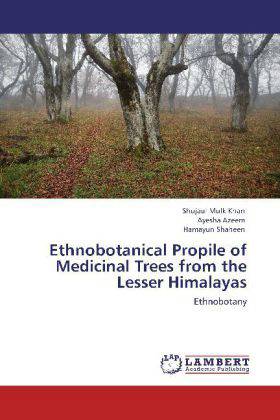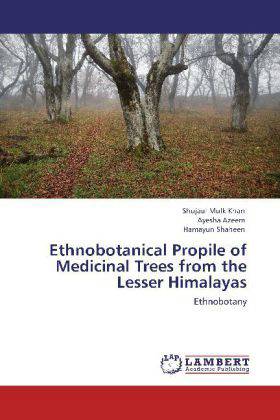
- Afhalen na 1 uur in een winkel met voorraad
- Gratis thuislevering in België vanaf € 30
- Ruim aanbod met 7 miljoen producten
- Afhalen na 1 uur in een winkel met voorraad
- Gratis thuislevering in België vanaf € 30
- Ruim aanbod met 7 miljoen producten
Zoeken
Ethnobotanical Propile of Medicinal Trees from the Lesser Himalayas
Ethnobotany
Shujaul Mulk Khan, Ayesha Azeem, Hamayun Shaheen
Paperback | Engels
€ 48,45
+ 96 punten
Omschrijving
Medicinal plants a gift of nature are being used against various infections and diseases throughout the World. Plants biodiversity provide food, wood, fruits, shade and oxygen for humane and fodder for their livestock. Similarly, numbers of trees have also been traditionally regarded as natural remedies for common ailments of human population. Present study was conducted to analyze the medicinal trees of lesser Himalayan region. Seventy-nine species of medicinal trees were studied at different localities in the area. Among them, 12 tree species are used each as astringent and anti-dysenteric each while, 9 each are used as tonic and anti-diarrheal. Moreover various number of these tree species are used as laxative, anthelmintic, in gonorrhea, ulcer, asthma and cough. Other species are used for kidney stone, rheumatism, Wound healing, urticaria, as anodyne, febrifuge and in skin and various other diseases. It is expected that raw material obtained from plants will establish base for the manufacture of synthetic drugs. Furthermore it was observed during study that 59 of these species have multiple uses. Few of the species are under risk and need quick conservation measures.
Specificaties
Betrokkenen
- Auteur(s):
- Uitgeverij:
Inhoud
- Aantal bladzijden:
- 108
- Taal:
- Engels
Eigenschappen
- Productcode (EAN):
- 9783848435234
- Verschijningsdatum:
- 15/03/2012
- Uitvoering:
- Paperback
- Formaat:
- Trade paperback (VS)
- Afmetingen:
- 152 mm x 229 mm
- Gewicht:
- 167 g

Alleen bij Standaard Boekhandel
+ 96 punten op je klantenkaart van Standaard Boekhandel
Beoordelingen
We publiceren alleen reviews die voldoen aan de voorwaarden voor reviews. Bekijk onze voorwaarden voor reviews.











